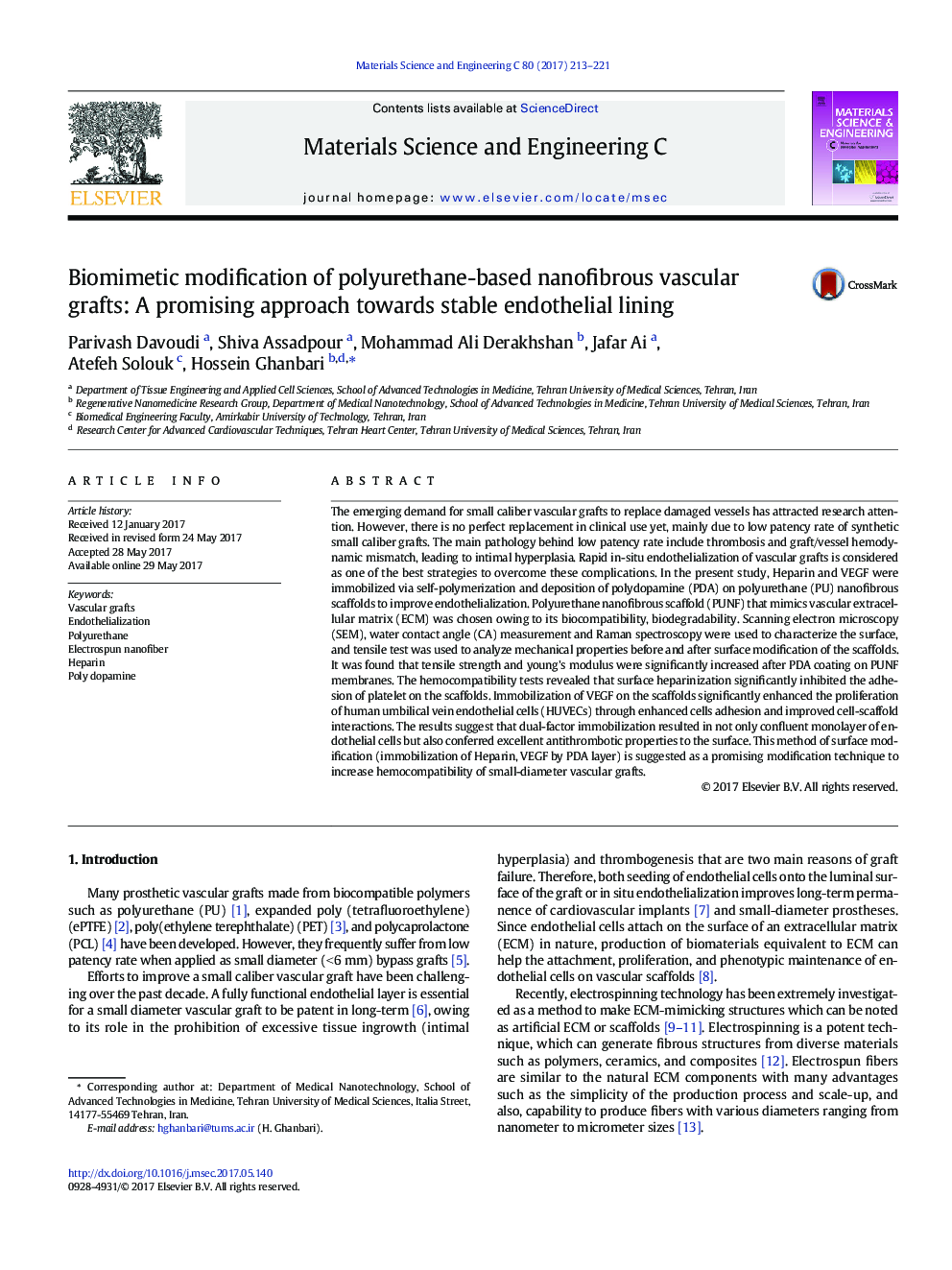| کد مقاله | کد نشریه | سال انتشار | مقاله انگلیسی | نسخه تمام متن |
|---|---|---|---|---|
| 5434314 | 1509141 | 2017 | 9 صفحه PDF | دانلود رایگان |
- A polyurethane based nanofibrous scaffold was developed for vascular tissue engineering applications.
- Heparin and VEGF were immobilized via self-polymerization and deposition of polydopamine (PDA) on nanofibrous scaffolds.
- Dual factors immobilization resulted in confluent monolayer of endothelial cells and conferred antithrombotic properties to the surface.
- This surface modification method was promising in enhancing hemcompatibility of small-diameter vascular graft.
The emerging demand for small caliber vascular grafts to replace damaged vessels has attracted research attention. However, there is no perfect replacement in clinical use yet, mainly due to low patency rate of synthetic small caliber grafts. The main pathology behind low patency rate include thrombosis and graft/vessel hemodynamic mismatch, leading to intimal hyperplasia. Rapid in-situ endothelialization of vascular grafts is considered as one of the best strategies to overcome these complications. In the present study, Heparin and VEGF were immobilized via self-polymerization and deposition of polydopamine (PDA) on polyurethane (PU) nanofibrous scaffolds to improve endothelialization. Polyurethane nanofibrous scaffold (PUNF) that mimics vascular extracellular matrix (ECM) was chosen owing to its biocompatibility, biodegradability. Scanning electron microscopy (SEM), water contact angle (CA) measurement and Raman spectroscopy were used to characterize the surface, and tensile test was used to analyze mechanical properties before and after surface modification of the scaffolds. It was found that tensile strength and young's modulus were significantly increased after PDA coating on PUNF membranes. The hemocompatibility tests revealed that surface heparinization significantly inhibited the adhesion of platelet on the scaffolds. Immobilization of VEGF on the scaffolds significantly enhanced the proliferation of human umbilical vein endothelial cells (HUVECs) through enhanced cells adhesion and improved cell-scaffold interactions. The results suggest that dual-factor immobilization resulted in not only confluent monolayer of endothelial cells but also conferred excellent antithrombotic properties to the surface. This method of surface modification (immobilization of Heparin, VEGF by PDA layer) is suggested as a promising modification technique to increase hemocompatibility of small-diameter vascular grafts.
Journal: Materials Science and Engineering: C - Volume 80, 1 November 2017, Pages 213-221
